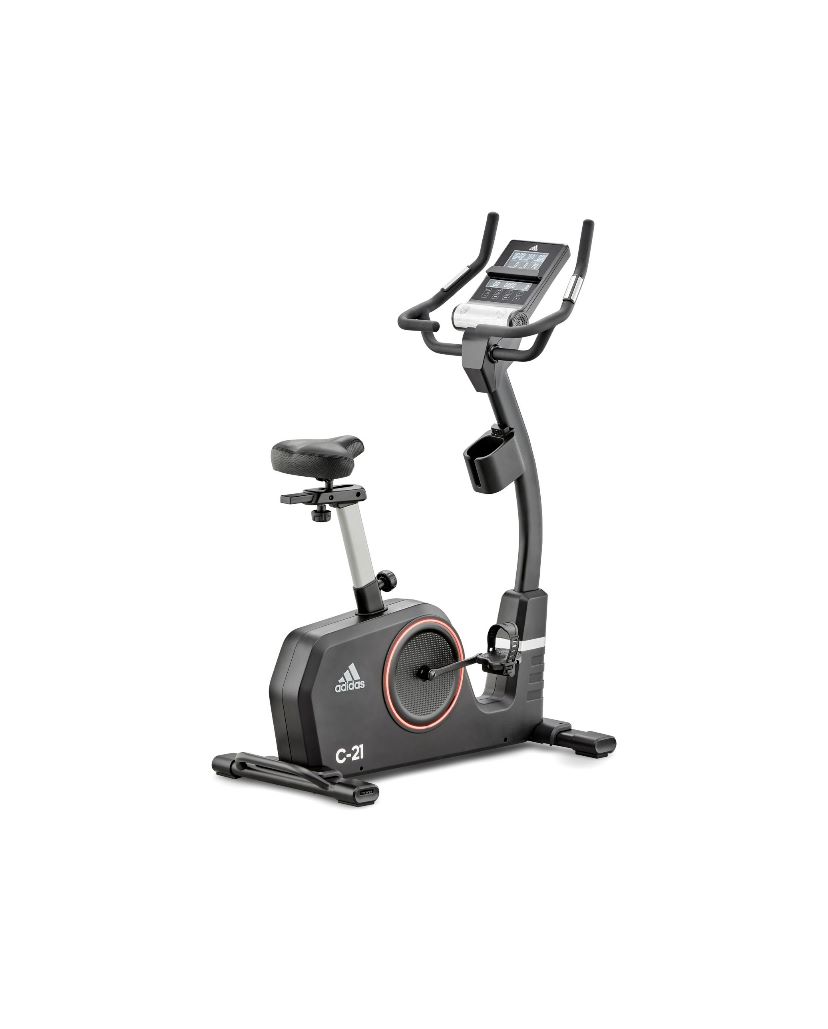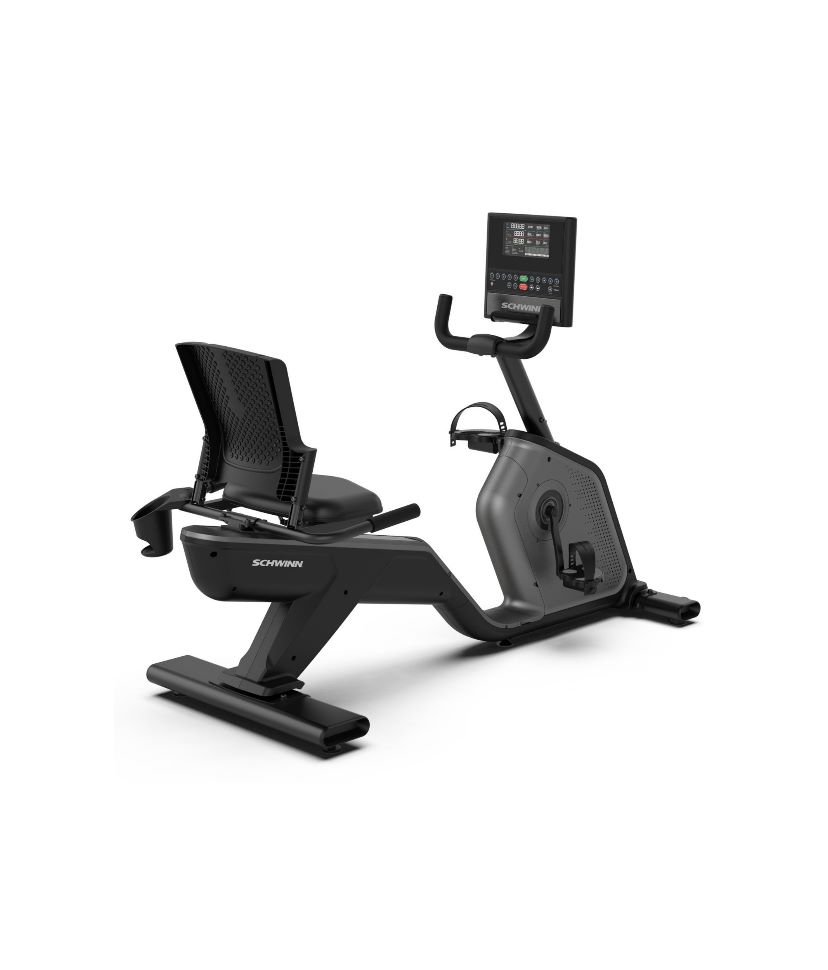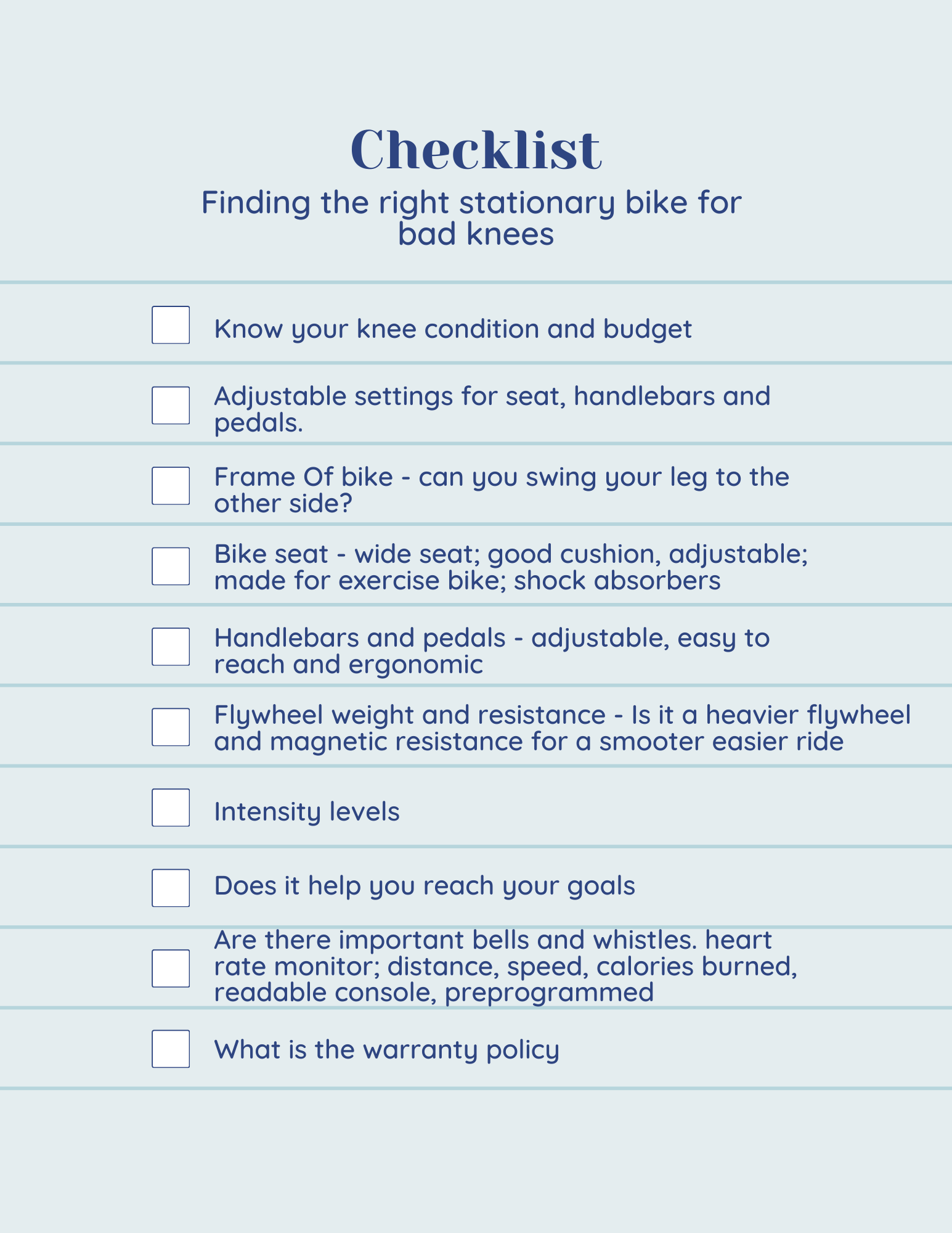How To Find the Best Stationary Bike For Bad Knees
If you have knee pain and are looking for a low impact cardio exercise option that won’t strain your joints, a stationary bike may be the right solution for you.
However, not all bikes are created equal – with so many different styles and models on the market, it can be difficult to find the best stationary bike for bad knees.
Finding one with features best suited for your body structure and knee issues can increase your workout and minimize pain.
Here is a guide to help you make an informed decision when shopping for your perfect stationary bike.
Know Your Knee Situation and Budget
Before beginning your search for the best stationary bike for bad knees, it’s important to establish your personal needs and budget.
Knowing your knee situation is essential in finding a bike that suits your individual requirements; so, start by identifying any stability and strength issues.
Are you someone that struggles with getting onto a bike due to decreased range of motion in your knees and hips? Do you have balance issues? Do you lack upper body strength?
In addition, knowing how much you are willing to spend will help narrow down the wide variety of options on the market.
Once you have a rough idea of what you need and the price range that works for you, you’re ready to begin shopping around for the perfect fit!
Be sure to take time to test out different bikes in person before making a purchase. It’s important to find one that fits your height, natural stride and safety needs—especially if you have bad knees.
As I stated before not all bikes are created equal.
So, what works for a friend or family member may not be a great fit for you.
If you’re not comfortable riding your bike, or if riding increases your knee pain, then chances are good that you just won’t get back on it. That would totally defeat the purpose of getting a stationary bike.
Look for a Stationary Bike with an Adjustable and Comfortable Fit
When shopping around for the best stationary bike for bad knees, it is essential to look for one with adjustable attributes.
Most recumbent or upright bikes these days come with a variety of customizable settings, so try to get one that has adjustments for different heights, user weight and even seat angles.
An adjustable fit will allow you to customize your bike according to your individual size and requirements, which can help increase comfort and reduce any pain or strain from your knees during workouts.
Choose The Right Bike Frame For Your Knees
If you have difficulty with raising your legs due to weak or painful knees or tightness in your hips. You may want to look for an upright bike with a low step-through design.
This type of frame eliminates the need to swing your leg over the top tube – ideal if you have knee issues – while also allowing you to easily get on and off the bike.

Additionally, you may benefit from a recumbent exercise bike with handrails that can be lowered and raised. This way you can just sit and swing your leg over.
Handrails help provide stability on the bike, which can come in handy if you suffer from weak knees.

Find The Perfect Seat
A bike seat that can be adjusted in height, depth and distance from the handlebars allows you to find a comfortable position for your legs and knees.
This is particularly important for those with knee issues as it helps to reduce pressure on joints.
Recumbent bikes with their bucket-like shape are popular for bikers with knee problems because the bottom of the seat is lower and there is no pressure exerted on your joints since you don’t bear any weight.
The long, reclined seat allows for stretchy leg muscles and less strain on knees. Some recumbent bikes come equipped with a backrest that can be adjusted to the desired angle depending on what type and amount of support is needed.
In addition, some people find that these bikes provide better lumbar support than traditional upright models which may be beneficial when exercising with an existing injury
If a recumbent bike is not for you then try to find a upright stationary bike with a wide cushioned saddle designed with ergonomic features for enhanced comfort.
Try to avoid a skinny bike saddle. This can place too much pressure on the perineum. As a result, you are compressing the nerves in the perineal area, Mostly the pudendal nerve. This can cause numbness, incontinence, prostate issues and sexual dysfunction.
Upright stationary bikes with vertical, backless designs allow you to lean on the bike while you pedal and help in promoting a more upright, efficient posture.
With such features, you won’t put extra pressure on your joints, allowing for more comfort and balance during your cycling session.
Comfort is key when it comes to exercising; averting any stresses on your joints can ensure a better overall experience and lessen the strains caused by rigorous repetition.
Evaluate The Handlebars & Pedals Design Features
You also need to make sure that the bike you choose has handlebars and pedals designed with your posture and comfort in mind.
Look for features such as adjustable handlebars, and adjustable foot pedals.
These features can all help you maintain an ergonomically correct workout position to avoid any potential discomfort or soreness from overworking the wrong muscles.
Make sure that the handlebars are easy to reach so you can maintain a good posture.
The pedals should also be non-slip and adjustable so you can switch up your routine and find the best fit for your particular body type.
Check the Quality of the Flywheel Weight & Resistance Levels
When it comes to bad knees, it is especially important to research the flywheel weight and resistance levels of the bike you are considering.
A heavier flywheel gives your motion more momentum and can help provide a smoother and quieter ride while pedaling. It also helps distribute your weight more evenly throughout the entire foot path.
Additionally, determining if you need manual or magnetic resistance is an important factor when considering a stationary bike for bad knees.
Magnetic resistance creates a smoother transition between pedaling that some people prefer when having mobility issues with their knees. It’s also easier to control because it requires less effort when changing settings.
Consider Your Goals and Choose the Appropriate Intensity Level Option
On the best stationary bikes for bad knees, you should be able to easily choose the intensity level of your workout.
A good quality stationary bike should have a variety of levels of resistance which allow you to customize your workout intensity according to your own physical abilities.
Set realistic workout goals and stay within the personal fitness limits that you’ve established.
You can then gradually increase the difficulty of your more rigorous workouts as your fitness levels improve and ensures that you are not overworking yourself at any point in time.
While challenging yourself with a higher intensity setting can help you burn more calories in less time, it may also result in increased joint strain if you are currently dealing with knee joints issues.
If this is the case, it may be better to stick with lower intensity settings and use a longer workout duration instead.
Consider your goals and determine which options will be most suitable to you when it comes to setting up the appropriate intensity level option on a stationary bike.
Bells And Whistles And Warranties Oh My!
Lastly, keep an eye out for thoughtful touches like built-in speakers, console displays that track metrics such as distance covered, speed, and calories burned per session.
Many stationary cycles come with programs designed to automatically ramp up or tone down resistance so you can customize your workout accordingly.
This can mentally help you to push harder when you are physically able. Which can help you make the most of your workout.
Additionally, look at the warranty period of your prospective purchase – most reputable bike manufacturers will offer long warranties that cover parts and labor costs in case you ever experience any mechanical issues.
You can also ask specific questions related to return policies and customer service support if you need further assistance with your machine in the future.

Conclusion
It is important to carefully evaluate different choices when looking for a stationary bike for bad knees.
Compare the models, look at reviews from previous users, and determine if it fits your budget.
Look for machines that have a low impact capability.
It should offer the latest technology in biomechanics, such as magnetic resistance and automated programming options that make it easier for users with physical limitations to exercise safely.
A few key features you should be on the lookout for include adjustable tension resistance, ergonomic console layouts and display screens, anti-slip footrests, comfortable seats, easy access handles or grips as well as brake systems specifically designed to protect vulnerable joints.
Additionally, look at the warranty period of your prospective purchase.
With the right bike, you should be able to find one that caters specifically to bad knees while still providing a fun and effective workout experience.
